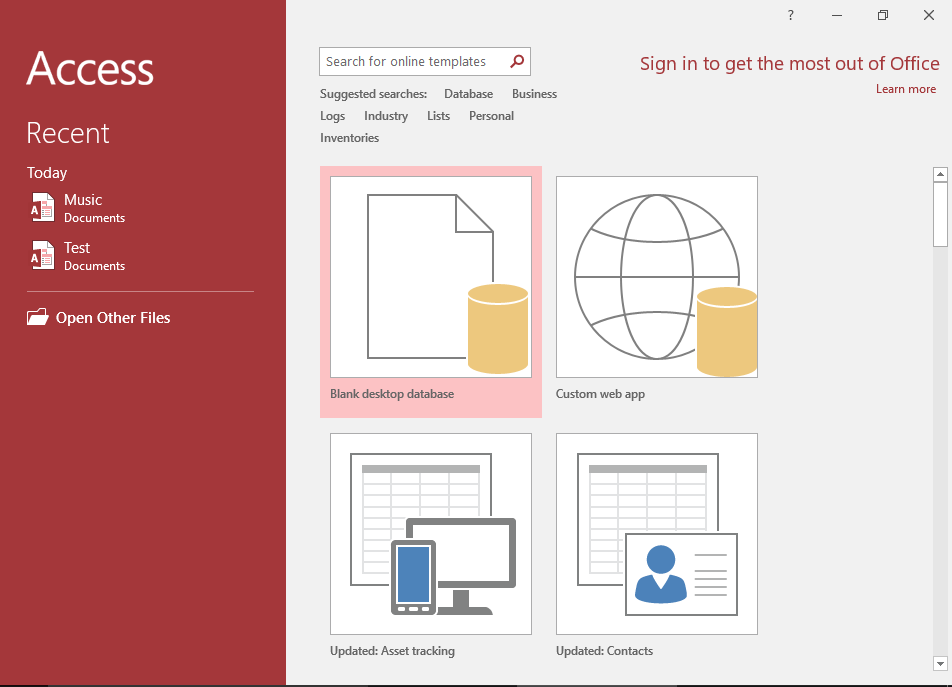

Basic statistical analysis functionality and other data analysis uses such as content coding.Data entry forms - Makes use of the way Access can be used to easily create forms for more efficient data entry.Tabular data associated with spatial information - geodatabases.The SAIRD tool has some preservation metadata.No widely adopted standard, Access has its own way of storing the documentation of fields, tables, etc.Microsoft documentation indicates that using newer versions of Access (e.g., Access 2016) will result in databases that cannot be opened in earlier versions of Access.

There are subtypes of the format but they have not been described.The default format starting from Access 2007

New features, including PivotTable views, support for XML, and an updated version of SQL would result in files not compatible with Access 2000. Support was dropped in Microsoft Access 2013. Support was dropped in Microsoft Access 2010.
Access 1.0, Support was dropped in Microsoft Access 2010. Better integrations with Outlook and web services. Better compatibility with more versions of Access. Refer to those for more detailed information of the format along with a large list of additional resources. The following descriptions of the MDB and ACCDB formats are largely summarized from the Library of Congress format description entries 2 along with additional information on the differences between the formats. Starting with Access 2007, the ACCDB format was used by default. Note that although the MDB file extension was used for all those versions, the internal format changed significantly. The MDB format is the native format for MS Access 1.0 through MS Access 2003. There are variations on these 1 but they will not be discussed further. These workshops have been generously funded by the Institute of Museum and Library Services # RE-85-18-0040-18.Ī Microsoft Access (MS Access) database could be in one of two main formats: MDB and ACCDB. This work was created as part of the Data Curation Network “Specialized Data Curation” Workshop #1 co-located with the Digital Library Federation (DLF) Forum 2018 in Las Vegas, Nevada on October 17-18, 2018. Suggested Citation: Rios, Fernando Fearon, Dave. SQL for Librarians from Library Carpentry. Intro to SQL: Querying and managing data from Khan Academy. Relational Databases and Microsoft Access by Ron McFayden. For introductory material on relational database concepts and MS Access see Note: This primer assumes a conceptual familiarity with relational databases (and associated terminology) and a basic level of experience with Microsoft Access. 1.0: initial version - 2.0: DCN peer review Recent versions of Access (e.g., 2016) should be able to open down to Access 2000įernando Rios (University of Arizona Libraries, Office of Digital Innovation & Stewardship), Dave Fearon (Johns Hopkins University Libraries Data Services) Microsoft access database design Pc#
A Windows PC with Access (Access does not run on Mac). Is there documentation about each table and relationship?. Intended use: use as a db or just be able to view the data?. Surveys, data entry, geospatial, storing metadata for certain disciplines, etc. Overview This primer describes curation of MS Access files.







 0 kommentar(er)
0 kommentar(er)
